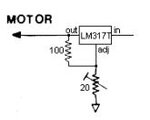neazoi
Advanced Member level 6
I want to provide a tape motor with 1.42v 60mA from a 13.5v source, without using a switching regulator. The problem is that the lm317 I use gets heated very quickly. Is there any way I can do it? maybe multiple step down regulators in series??

